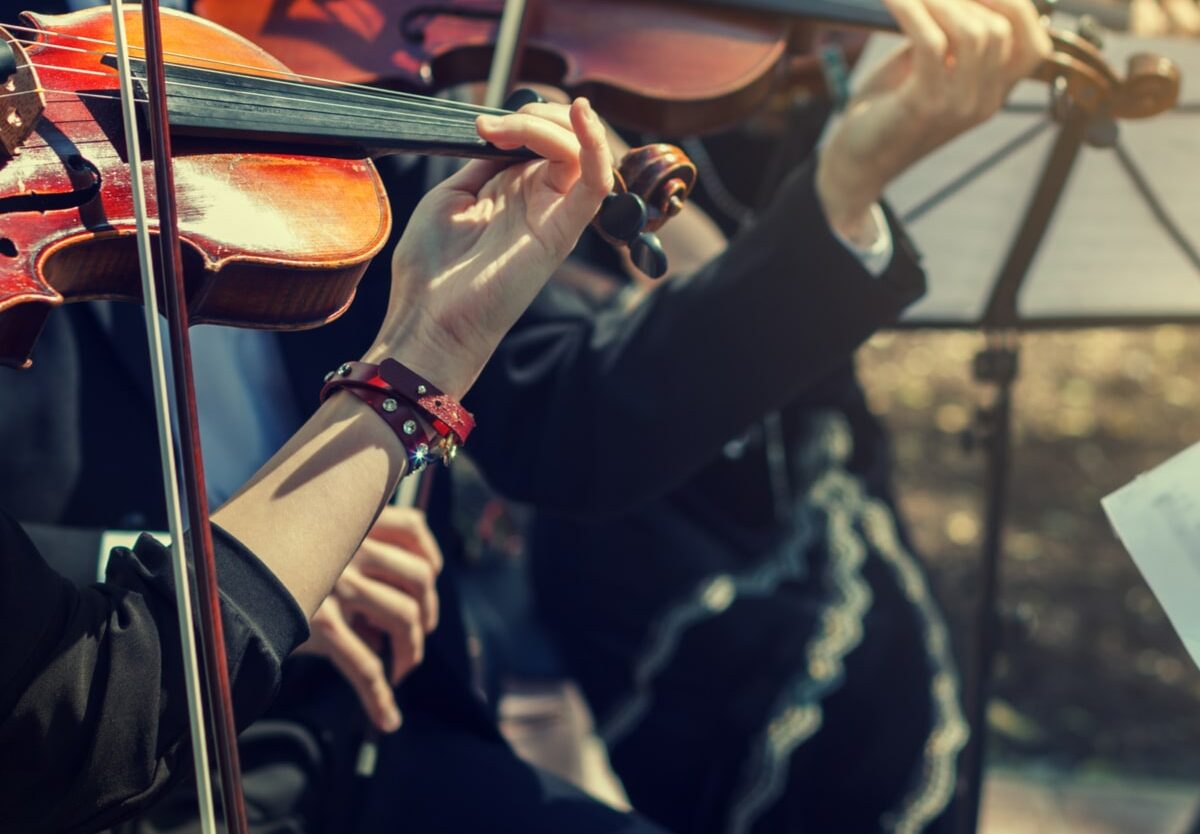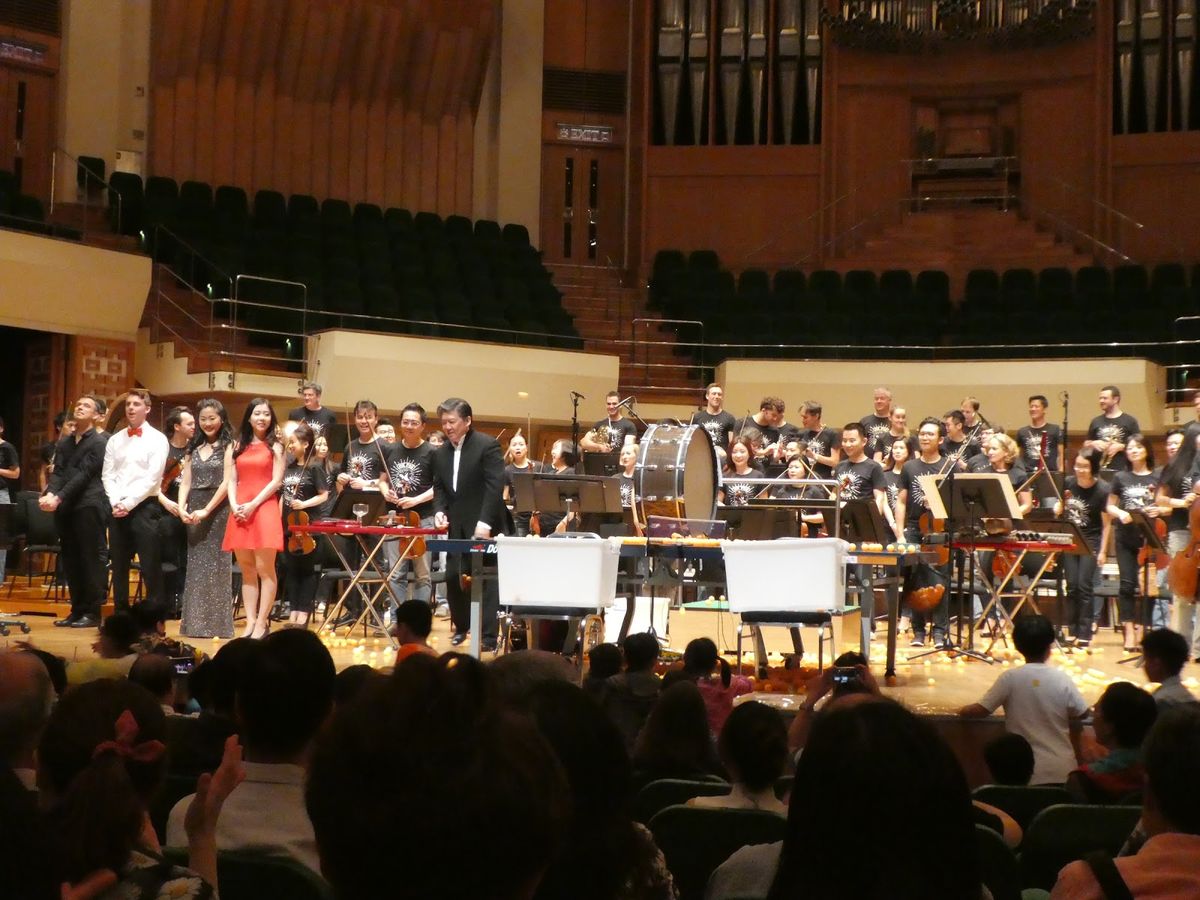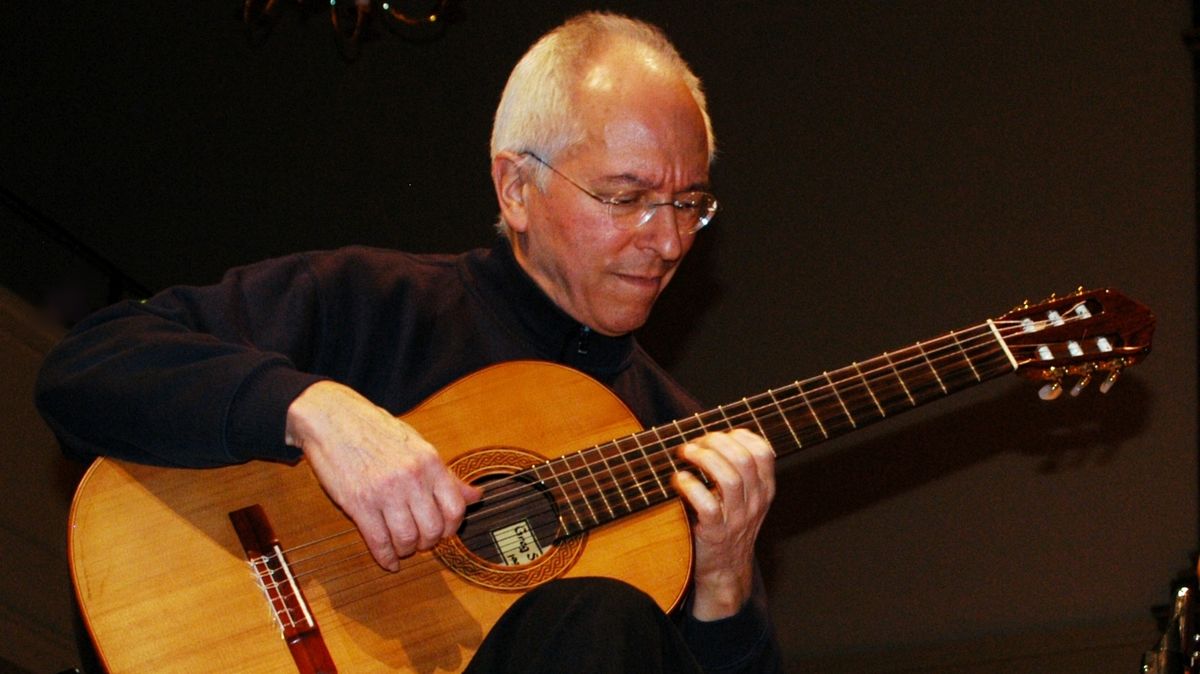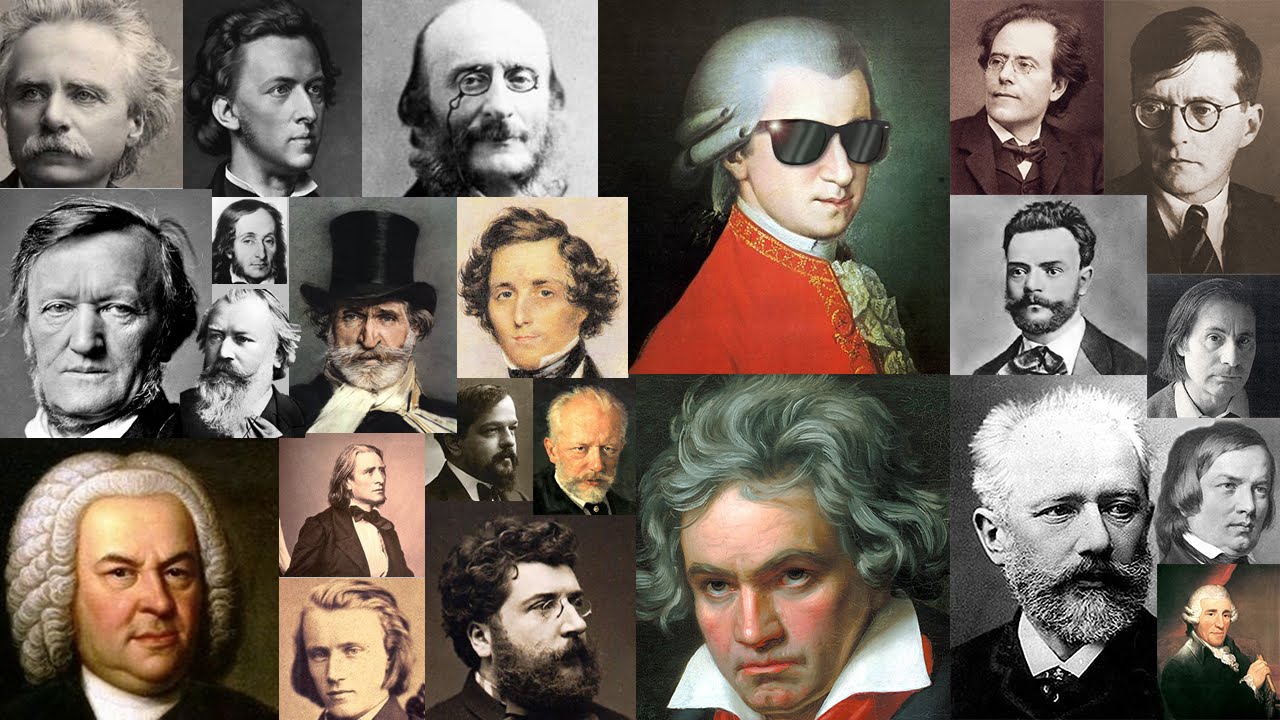Home>Genres>Classical>What Are The Characteristics Of Classical Music


Classical
What Are The Characteristics Of Classical Music
Modified: February 24, 2024
Discover the defining characteristics of classical music, including its elegance, complexity, and timeless beauty. Explore the rich history and influential composers of this renowned genre.
(Many of the links in this article redirect to a specific reviewed product. Your purchase of these products through affiliate links helps to generate commission for AudioLover.com, at no extra cost. Learn more)
Table of Contents
Introduction
Classical music is a genre that has stood the test of time and continues to captivate audiences with its timeless beauty and artistic depth. Its origins date back to the 11th century, making it one of the oldest forms of music still celebrated today. Defined by its rich harmonies, intricate melodies, and complex structures, classical music offers a window into the artistic genius of composers from different eras.
Unlike popular music, which evolves and changes with each passing decade, classical music possesses a distinct and enduring quality. Its characteristics are rooted in tradition and reflect the cultural and historical contexts in which it was composed. As a result, classical music not only provides listeners with an auditory experience but also offers a glimpse into the history and evolution of music as a whole.
Classical music is often seen as a sophisticated genre that requires an attentive ear. It demands a certain level of patience and engagement from its listeners, rewarding them with layers of complexity and emotional depth. The beauty of classical music lies in its ability to evoke a range of emotions, transport listeners to different places and times, and engage their intellect with its intricate compositions.
In this article, we will explore the characteristics that define classical music and highlight the elements that make it such a unique and revered genre. From its historical origins to its emphasis on melody and structure, we will delve into the world of classical music and uncover what sets it apart from other musical genres.
Historical Context
To truly understand classical music, it is essential to delve into its historical context. Classical music emerged during the Baroque period in the late 16th century and continued to flourish until the early 19th century. It was a time of great cultural and artistic development, with significant contributions from renowned composers such as Bach, Mozart, and Beethoven.
During this period, music played a central role in the courts of kings and nobles. Composers were often employed by wealthy patrons who commissioned music for various occasions, including religious ceremonies and social gatherings. The support of these patrons allowed composers to dedicate their time and creativity to crafting intricate and masterful compositions.
Classical music evolved from the musical styles of the preceding Baroque period, characterized by its ornate and elaborate melodies. Composers of the Classical era sought to simplify and streamline musical structure, favoring clarity and balance over excessive ornamentation. This shift in style gave birth to the classical form, which emphasized rationality, symmetry, and restraint.
Throughout this period, musical compositions became more refined and organized. Composers began utilizing standardized musical forms such as sonatas, symphonies, and concertos. These structures provided a framework for composers to explore and develop their musical ideas while maintaining a sense of coherence and unity within their compositions.
The Classical era also marked a significant advancement in instrumental music. Orchestras grew in size and complexity, with the addition of new instruments and the establishment of standardized sections, such as the strings, woodwinds, brass, and percussion. This expansion allowed composers to experiment with different combinations of instruments and create intricate and dynamic musical textures.
Furthermore, the development of the pianoforte, a predecessor to the modern piano, enhanced the expressive possibilities of keyboard music. Its ability to produce both soft and loud sounds, coupled with its wide range of tones, allowed composers to explore a greater range of emotions and dynamics in their compositions.
Overall, the historical context of classical music provides a foundation for understanding the characteristics that define the genre. It was a time of innovation, refinement, and immense creativity, with composers pushing the boundaries of musical expression and paving the way for the centuries of classical music that followed.
Complexity and Structure
One of the defining characteristics of classical music is its complexity and intricate structure. Composers of this genre often crafted compositions with multiple layers of melodies, harmonies, and rhythms, creating a sense of depth and intricacy.
Classical music is known for its meticulous attention to detail and precise construction. Composers carefully crafted their compositions, paying close attention to the relationships between musical elements. This emphasis on structure is evident in the use of musical forms such as sonata-allegro, minuet and trio, and rondo. These forms provide a framework for organizing musical ideas, allowing composers to develop and explore different themes and variations within their compositions.
Moreover, classical music is characterized by its use of thematic development. Composers often introduced a main musical theme, or motif, at the beginning of a piece and then proceeded to develop and transform it throughout the composition. This technique adds a sense of unity and coherence to the music, as different variations of the theme are interwoven and connected.
Another aspect of classical music’s complexity lies in its intricate harmonies. Composers carefully chose chord progressions and harmonies that create tension and resolution, adding depth and emotional expression to the music. The use of dissonance and consonance, along with modulation to different key centers, creates a sense of musical narrative and tension and resolution.
Rhythm also plays a significant role in classical music. Composers often explored complex rhythmic patterns and syncopation, adding a sense of energy and excitement to their compositions. Intricate rhythmic interplay between different sections of the orchestra or between multiple voices in a fugue showcases the skill level and technical prowess of both the composer and the performers.
The complexity and structure of classical music demand a level of active listening and engagement from the audience. It invites the listener to delve deeper into the layers of the music, to appreciate the intricate details and interplay between different musical elements. This level of complexity sets classical music apart from other genres, offering a deeply rewarding and intellectually stimulating experience for those who take the time to explore and appreciate it.
Instrumentation and Orchestration
One of the distinguishing features of classical music is its emphasis on orchestration and the use of a wide variety of musical instruments. Composers of the classical era had access to an expanding array of instruments, which allowed them to create rich and diverse soundscapes.
The orchestra became a central component of classical music, with composers writing large-scale works specifically designed for this ensemble. The classical orchestra typically consists of instruments from four main families: strings, woodwinds, brass, and percussion.
The string section forms the foundation of the orchestra, comprising instruments such as the violin, viola, cello, and double bass. Strings provide melodic and harmonic support and are capable of producing a wide range of tones, from the delicate and ethereal to the rich and resonant.
The woodwind section adds color and texture to the orchestra, with instruments like the flute, clarinet, oboe, and bassoon. Woodwinds have the ability to produce a wide range of timbres and expressiveness, enriching the overall sound of the ensemble.
Brass instruments, such as the trumpet, French horn, trombone, and tuba, bring power and grandeur to classical music. Brass sections add a majestic and vibrant quality to the orchestra, often used to highlight climactic moments or create bold fanfare-like passages.
The percussion section, including instruments like the timpani, snare drum, cymbals, and triangle, provides rhythmic support, accents, and added textures. Percussion instruments can range from subtle and delicate to dynamic and commanding, adding depth and excitement to the music.
Classical composers were skilled at writing for the different instruments of the orchestra, showcasing their unique characteristics and capabilities. They explored the tonal qualities of each instrument, arranged them in various combinations, and employed different playing techniques to create a diverse and engaging sound palette.
Furthermore, classical music often featured solo instruments, allowing individual performers to showcase their virtuosity and artistry. Concertos, for example, provided an opportunity for a soloist to take center stage and demonstrate their technical prowess and interpretive skills, with the orchestra providing accompaniment.
The careful orchestration and integration of different instruments in classical music not only added depth and complexity to the compositions but also allowed composers to express a wide range of emotions and moods. The mastery of orchestration is a testament to the skill and creativity of classical composers, as they navigated the various sonic possibilities offered by the orchestra to shape their musical visions.
Emphasis on Melody and Harmony
One of the defining characteristics of classical music is its emphasis on melody and harmony. Composers of this genre crafted compelling and memorable melodies that formed the backbone of their compositions.
A strong melodic line is at the forefront of classical music, often serving as the primary vehicle for expressing emotions and conveying the composer’s intentions. Melodies in classical music are often lyrical and singable, allowing listeners to easily connect with the music on an emotional level.
These melodies are typically structured in a balanced and symmetrical manner, reflecting the classical form and aesthetic. They often consist of phrases and motifs that are repeated, varied, and developed throughout the composition, creating a sense of continuity and coherence.
Harmony, in classical music, plays a crucial role in supporting and enhancing the melodic line. Composers carefully crafted chord progressions and harmonies that complemented and enriched the melodies, adding depth and emotional richness to the music.
Classical music is known for its use of traditional harmonic conventions, such as tonic-dominant relationships and functional harmony. These harmonic progressions provide a sense of stability and resolution, allowing listeners to experience a satisfying musical journey.
Classical composers were also skilled in the art of modulation, seamlessly transitioning between different keys to create tension, contrast, and emotional impact. Modulations added complexity and variety to the music, while maintaining a sense of unity within the overall composition.
Counterpoint was another significant aspect of classical music’s emphasis on harmony. Composers integrated multiple melodic lines, each with its own distinct character, to create intricate and interwoven textures. The skillful handling of counterpoint added depth and complexity to the harmony, showcasing the composer’s expertise in creating harmonically rich and contrapuntally engaging compositions.
The combination of melody and harmony in classical music allowed composers to evoke a wide range of emotions, from joy and exuberance to sadness and longing. By carefully crafting these elements, classical composers were able to guide the listener through a musical journey, creating moments of tension and resolution, and evoking a myriad of emotional responses.
The emphasis on melody and harmony in classical music showcases the skill and creativity of the composers of this genre. Their ability to create captivating and emotive melodies, combined with harmonies that support and enhance those melodies, is a testament to the enduring appeal and beauty of classical music.
Use of Traditional Forms
In classical music, the use of traditional forms is a prominent characteristic that sets it apart from other musical genres. Composers of this era often adhered to established structures and frameworks, providing a sense of order and clarity to their compositions.
One of the most prevalent forms in classical music is the sonata-allegro, also known as the sonata form. This form consists of three main sections: the exposition, development, and recapitulation. The exposition introduces the main themes of the piece, the development section elaborates and explores those themes, and the recapitulation restates the themes in their original form.
The sonata form allows composers to present and develop musical ideas in a logical and organized manner. It provides a narrative structure to the music, creating a sense of tension and resolution as themes are introduced, developed, and resolved throughout the composition.
Another traditional form used in classical music is the minuet and trio. It typically appears as the third movement of a symphony or string quartet. The minuet is a graceful and elegant dance in triple meter, while the trio section offers a contrasting and often more lyrical melody. The return of the minuet section after the trio creates a sense of balance and symmetry within the overall composition.
Rondo form is also commonly found in classical music. It features a recurring theme that alternates with contrasting sections. The structure can be represented as ABACADA, with the A section being the main theme and the B, C, and D sections providing contrasting material. The return of the A section at the end creates a sense of familiarity and completion.
Other traditional forms used in classical music include the theme and variations, where a theme is presented and then varied in subsequent sections, and the fugue, a complex contrapuntal composition built on a single subject.
These traditional forms served as a framework for composers to structure their musical ideas and develop their compositions. By utilizing these established forms, classical composers were able to maintain a balance between stability and creativity, offering listeners a sense of familiarity and structure while also exploring new musical territory.
The use of traditional forms in classical music showcases the craftsmanship and ingenuity of the composers of this era. Their ability to work within the constraints of these forms while still expressing their unique artistic voice is a testament to the lasting impact and timeless appeal of classical music.
Emotional and Expressive Qualities
Classical music is renowned for its ability to evoke a wide range of emotions and express profound emotional depth. Composers of this genre were masters at using various musical techniques to convey their thoughts, feelings, and experiences.
One of the ways classical music achieves emotional expressiveness is through the use of dynamics. Composers employed markings such as pianissimo (very soft) and fortissimo (very loud) to create contrasts and emphasize certain passages. The careful manipulation of volume adds intensity, drama, and a sense of emotional impact to the music.
Tempo is also a critical element in conveying emotions in classical music. Composers indicated the speed at which a piece should be performed through tempo markings, such as allegro (fast), adagio (slow), or andante (moderate). The choice of tempo directly influences the mood and atmosphere of a composition, allowing composers to create serene, energetic, or melancholic moments.
Classical music is also known for its expressive melodies. Composers crafted melodic lines that could range from joyous and uplifting to somber and introspective. These melodies often reflect the emotional intentions of the composer, inviting listeners to connect and empathize with the music on a deep level.
Furthermore, classical music utilizes various musical techniques to portray different emotions. For example, composers may employ dissonance to create a sense of tension and conflict, which is later resolved to evoke a feeling of release or resolution. Rapid and intricate passages can convey a sense of excitement or agitation, while slower, sustained notes can evoke a sense of calmness and tranquility.
Classical music also has the ability to transport listeners to different emotional landscapes. It can evoke a sense of nostalgia, bring forth feelings of longing, or even conjure vivid images of nature, love, or tragedy. The emotional power of classical music lies in its ability to transcend language and communicate directly to the human soul.
Moreover, classical music is often associated with the expression of profound human experiences, reflecting universal themes such as love, loss, triumph, and despair. Composers poured their emotions and personal experiences into their compositions, offering an intimate glimpse into their inner worlds. This deeply personal and introspective nature of classical music allows listeners to connect with the music in a profound and meaningful way.
Classical music’s emotional expressiveness continues to resonate with audiences across generations. It has the power to stir emotions, ignite imagination, and provide solace in times of joy or sorrow. The ability of classical music to evoke such a broad range of emotions is a testament to its enduring legacy as an art form that speaks directly to the human experience.
Importance of Dynamics and Tempo
Dynamics and tempo play a vital role in classical music, influencing the overall interpretation and emotional impact of a composition. Composers of this genre carefully indicated dynamic markings and tempo instructions, allowing performers to bring their compositions to life with precision and expressiveness.
Dynamics refer to the volume or intensity of the music. Composers use markings such as pianissimo (very soft), mezzo forte (moderately loud), and fortissimo (very loud) to indicate the desired level of loudness or softness. Changes in dynamics within a piece create contrasts, adding depth and emotional variation to the music.
The use of dynamics helps shape the musical narrative and guide listeners through different emotional states. A sudden shift from a soft, delicate passage to a loud, powerful one can create a dramatic and thrilling effect. Similarly, a gradual decrescendo from a loud section to a soft one can evoke a sense of tranquility or reflection.
Tempo, on the other hand, refers to the speed or pace at which a piece is performed. It greatly influences the mood, character, and overall interpretation of a composition. Composers indicate the desired tempo through Italian terms such as allegro (fast), adagio (slow), or andante (moderate).
The choice of tempo sets the foundation for a piece, creating a specific atmosphere and emotional resonance. A fast tempo can convey a sense of excitement, energy, or urgency, while a slow tempo can evoke feelings of introspection, solemnity, or yearning. The interplay of different tempos within a composition adds depth and contrast, allowing for a more nuanced emotional journey.
The precise execution of dynamics and tempo markings is crucial for performers to effectively convey the composer’s intentions. A skilled performer understands the nuances of playing softly or loudly, and they adjust their playing accordingly to bring out the desired emotional expression. Similarly, they carefully consider the tempo indications to find the perfect balance between accuracy, artistic interpretation, and emotional impact.
Both dynamics and tempo work synergistically, enhancing the emotional depth and impact of classical music. The precise control of dynamics allows composers and performers to highlight certain passages, create moments of tension or release, and evoke a broad range of emotions. Meanwhile, the choice of tempo establishes a rhythmic foundation and sets the overall pace and mood, further enhancing the emotional narrative of a composition.
The importance of dynamics and tempo in classical music goes beyond simple volume and speed control. They are essential tools for performers to effectively communicate the composer’s artistic vision and allow listeners to fully immerse themselves in the emotional journey that classical music offers.
Notable Composers of Classical Music
Classical music has been enriched by the contributions of numerous influential composers who have left an indelible mark on the genre. Their innovations, creativity, and mastery of musical craftsmanship have shaped the development of classical music throughout history.
Johann Sebastian Bach, a composer from the Baroque period, is widely regarded as one of the greatest composers of all time. His genius is evident in his intricate counterpoint and mastery of form. Bach’s compositions, such as the Brandenburg Concertos and the Well-Tempered Clavier, showcase his technical prowess and profound emotional depth.
Wolfgang Amadeus Mozart, a prodigious composer and performer, bridged the classical and Romantic eras. His compositions are known for their exquisite melodies, superb craftsmanship, and emotional expressiveness. Mozart’s works, such as the Symphony No. 40 and the operas The Marriage of Figaro and Don Giovanni, continue to be beloved and celebrated for their brilliance and beauty.
Ludwig van Beethoven is considered one of the most influential composers in the transition from the Classical era to the Romantic era. His compositions, such as the Symphony No. 9 (Ode to Joy) and the Moonlight Sonata, pushed the boundaries of classical music with their innovative harmonies, dramatic contrasts, and intense emotional expression.
Franz Joseph Haydn, often referred to as the “Father of the Symphony” and the “Father of the String Quartet,” played a pivotal role in the development of classical music. Haydn’s prolific output includes numerous symphonies, string quartets, and oratorios. His compositions are characterized by their elegance, wit, and mastery of form.
Other notable composers of the classical era include Johannes Brahms, known for his romantic lyricism and mastery of symphonic and chamber music; Franz Schubert, renowned for his expressive songs (lieder) and powerful harmonic writing; and Antonio Vivaldi, an Italian baroque composer famous for his innovative compositions and virtuosic violin concertos.
It is important to remember that classical music encompasses a wide range of composers and styles, and the list of notable composers is vast. Each composer brings their own unique voice, style, and contributions to the rich tapestry of classical music.
These composers, with their creativity and innovation, have left an enduring legacy in the world of classical music. Their works continue to inspire, challenge, and captivate audiences around the globe, reminding us of the power and beauty of this art form.
Conclusion
Classical music is a genre that has stood the test of time, captivating audiences with its timeless beauty, complexity, and emotional depth. Rooted in tradition and shaped by the creative genius of remarkable composers, classical music offers a rich and profound musical experience.
From its historical origins during the Baroque period to the development of standardized forms and the emphasis on melody, harmony, and structure, classical music has evolved and flourished. It showcases the meticulous craftsmanship and mastery of composers who pushed the boundaries of musical expression.
The orchestration and instrumentation of classical music create diverse and dynamic soundscapes, utilizing a wide range of instruments and showcasing their unique qualities. The emphasis on melody and harmony allows composers to evoke a broad spectrum of emotions and express deep emotional narratives.
Classical music utilizes traditional forms as frameworks for composition, balancing stability and creativity. The careful usage of dynamics and tempo adds depth, contrast, and emotional impact to the music, guiding listeners through a variety of emotional states.
Notable composers like Bach, Mozart, Beethoven, Haydn, and many others have left an indelible mark on classical music through their innovative compositions and unparalleled creativity. Their works continue to be celebrated for their timeless beauty and profound artistic expression.
In conclusion, classical music holds a unique position in the world of music, offering a rich and diverse spectrum of melodies, harmonies, and emotional journeys. It provides a window into the history and evolution of music while transcending time and cultural boundaries. Whether experienced in grand concert halls or enjoyed intimately through recordings, classical music remains a source of inspiration, intellectual stimulation, and emotional fulfillment for audiences around the world.











